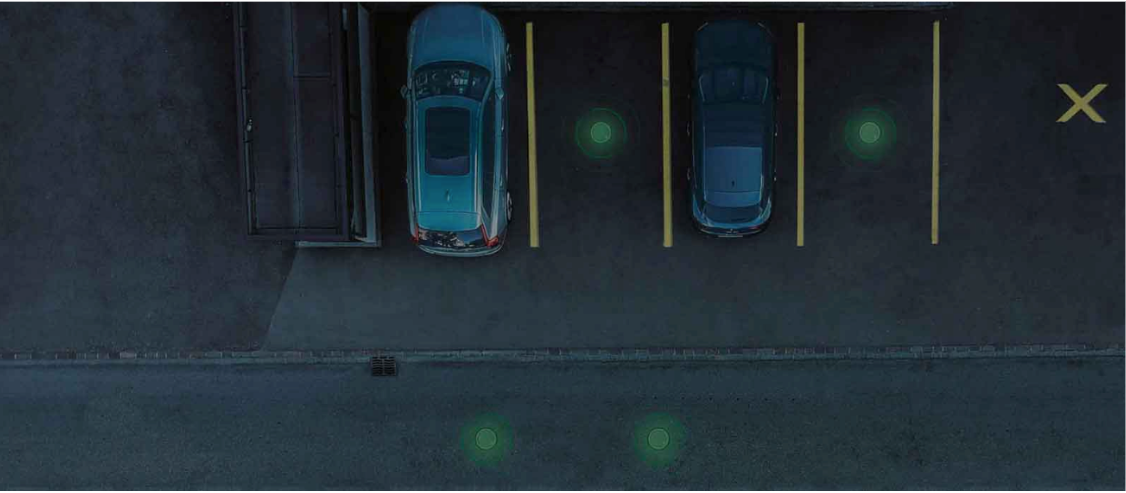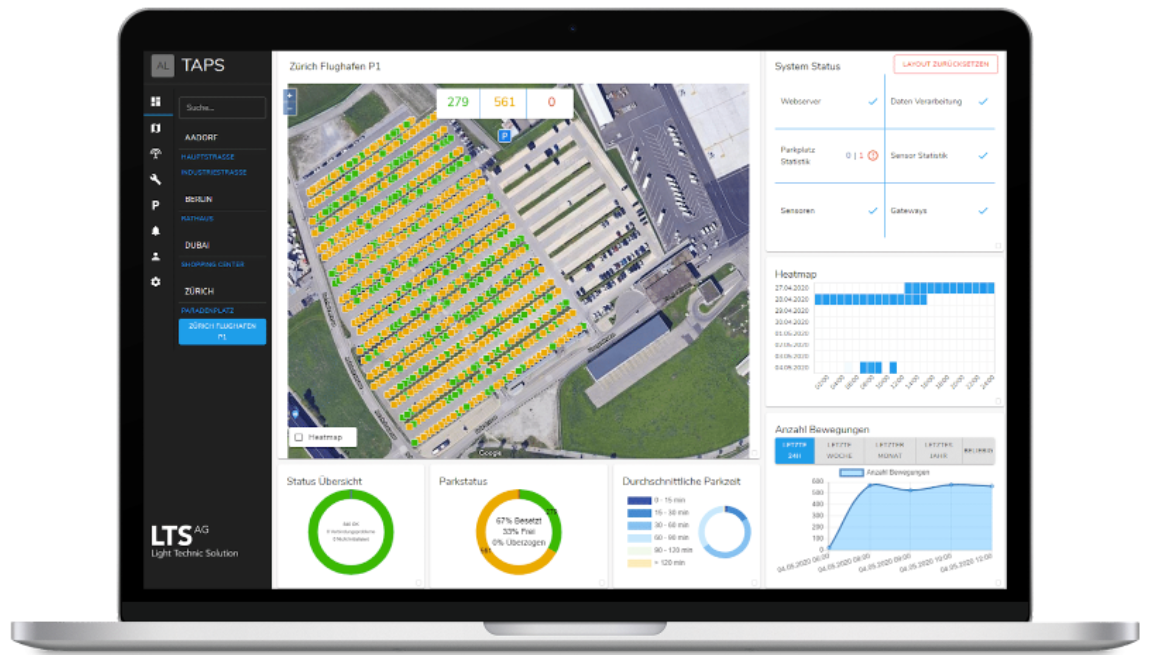Always navigate to the right parking garage with TAPS and the app
The best sensor technology is of little help if parking garages do not provide the data they collect. Drivers need to know what the current activity level is in a parking garage. This helps to target the right parking garages with free parking spaces.
An app, for example, provides support here. Parking garage operators can develop their own application and feed it into the data collected via TAPS. Drivers download the app before heading to the parking garage. It is immediately apparent where the parking supply is greatest and where it is already decreasing.
This is made possible by the TAPS sensors. If the parking garage is equipped with enough sensors, they report the number of vehicles on site. Data analysis is particularly easy thanks to TAPS, and users can access it via the app. This is a typical application example for the use of data from TAPS.
If drivers use the app, traffic in and between parking garages is reduced. It is no longer necessary to drive to several parking garages in search of a free parking space.
The decisive factor here is that an online connection to the parking garage via app alone is not sufficient. Without the data from the TAPS sensors, even the operator does not know whether parking spaces are available or not. Only with TAPS does the operator get a view of his own, effectively available parking space supply and can work with this information.
Seamlessly integrating TAPS into the smart city

One of the strengths of TAPS is that it supports many common interfaces for data transmission. LoRa is one of these interfaces. Many cities today are focusing on networking and relying on LoRaWAN (Long Range Wide Area Network) radio networks. Cities and municipalities in various countries are building LoRaWAN infrastructures to enable smart services and applications.
This benefits the users of TAPS, because the gateway is already technically prepared to transmit the data via LoRa. If a corresponding infrastructure is available in the vicinity of the parking garage or parking lot, the investment costs in the system are reduced.
LoRaWAN offers many advantages that fit well with TAPS. These include low energy consumption and uncomplicated radio connectivity. LoRaWAN is already being used today to measure traffic flows in the smart city, for example.
With TAPS, users are given the option of integrating parking monitoring into the LoRaWAN infrastructure. With a corresponding data feed, it is possible, for example, to offer an overview of the entire parking supply in the city.
The parking garage thinks for itself - and directs traffic

TAPS is more than just a parking management system. It also serves traffic management. Here, too, the sensors play an important role, and they can be installed not only in the parking lots themselves. LTS AG's customers also use them at road intersections to control traffic there.
In the context of parking space monitoring, for example, they can be additionally installed at the entrance to the parking garage or parking area. This offers a decisive advantage. The operator registers who is currently driving into his parking garage and knows at an early stage that another motorist is looking for a free parking space. The intelligent parking garage can support this visitor and direct him in the parking garage.
It would be conceivable, for example, to set up a digital display board (digital signage) in the entrance area of the parking garage. It could display how many parking spaces are currently available on which parking deck. The data required for this comes from the TAPS sensors. This would enable visitors to find their way around the parking garage much more quickly.
The prerequisite for such applications is always the availability of the required data. This data must be up-to-date, so data acquisition must take place in real time. In addition, a high precision of the acquisition is important to avoid faulty controls. All this is provided by the TAPS product from LTS AG.
Once the sensors are installed in the parking garage at the appropriate locations, they consistently provide the desired data for use. Various applications and services can be developed on this basis. In this way, every parking garage operator can find individual solutions. LTS AG can support him in this.
What do I need for parking monitoring?

TAPS is designed for simplicity. Few components are required to get the system up and running. These include these three essential components:
At TAPS, the focus is on collecting data. To record the vehicles, TAPS relies on its sensors for monitoring. These register the parked and moving vehicles and automatically transmit all the desired information. The advantage of the system is that the sensors can be installed wirelessly. No battery or other power supply is required for operation.
The data is transmitted to the TAPS gateway. This is the second essential component of the system. The gateway can use various interfaces to forward the data originating from the sensors. This is where maximum compatibility is important. Various interfaces such as Bluetooth, WiFi, LTE or LoRa and others are available.
For the management of parking spaces, the user uses the TAPS software. Here, the work with the collected data and its evaluation takes place. In the context of parking planning, it is possible and useful to plan the integration of TAPS as early as possible. This ensures the greatest possible benefit.
How do I manage my parking supply with TAPS?
For optimal parking monitoring, it is important to quickly offer the desired parking space to each authorized driver. Therefore, the TAPS software provides the user with the possibility to set up payments and reservations.
The system is predestined to provide such functions in connection with parking space availability. Thanks to its sensor technology, it knows at all times which parking space is currently free. If a visitor does not have permission to use the parking space, the software denies access.
Furthermore, the TAPS software offers various data evaluations that help to control the parking spaces. These include reports and statistics that provide information about length of stay and frequencies.
A contact with the TAPS AG team is possible at any time. It is gladly available for assistance with parking monitoring.




)
)